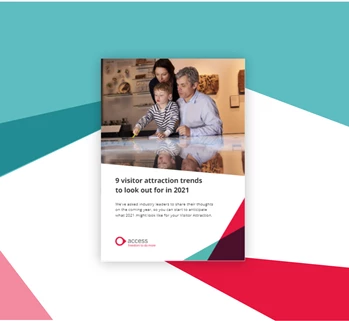How to make sure members show up for pre-booked visits
When visitor attractions reopened after lockdown, the new social distancing guidelines called for major changes to the way they operate. One of the new systems that many attractions put in place was pre-bookable timed entry.
Entry time slots help manage flow, avoid bottlenecks around any new one-way systems and generally minimise contact throughout the visitor experience. The pre-bookable element is a step towards a cashless – i.e. contactless – structure, too.
But what happens when no money exchanges hands, digitally or physically, at the point of booking these time slots, as happens with annual members and season ticket holders? For some attractions, this particular process has contributed to a new problem: member no-shows.
Hever Castle in Kent is one attraction wrestling with this hitch. "One complex area after reopening under the ‘new normal’ has been managing the availability of time slots for our annual members and day visitors. We chose to keep it simple and not to limit time slots for our annual members. Unfortunately, what we saw in our first week was £15,500 of unrealised revenue as a result of no shows from members,” says Sarah Cole, the castle’s marketing and communications manager.
Unfortunately, the problem of member no-shows isn’t unique to Hever Castle. Here are five strategies you can employ to help tackle the issue at your visitor attraction.
1. Send email reminders
A direct email to members and season ticket holders helps address the problem by raising awareness. Hever Castle sent a “Gentle Reminder” e-newsletter to all members in June. “The response to this was very positive and as a result no shows have reduced but we continue to encourage our members to contact us if they are unable to visit,” reports Cole.
You could also add an extra step to your automated booking email sequence: a reminder email at least 24 hours before the scheduled visit that contains a call to action for those who can no longer make their visit. This call to action should include clear instructions for cancelling a pre-booked time slot, which leads us neatly to…
2. Allow cancellations
Make it crystal clear that your visitor attraction allows visitors to cancel if their plans change. Also, make the cancellation process itself as hassle-free (and cost-free) as possible.
A simple email address for cancellations, as employed by Royal Botanic Gardens Kew, is effective enough if you’re unable to put in place a fully automated cancellation procedure. English Heritage now allows free cancellations for members via their Customer Service order tracker/live chat, clearly indicated in their Site Reopening FAQs.
3. Be open about the implications
Many members are oblivious to the effects of their failure to show up. Take the time to make them aware of the financial impact of their no-show on your visitor attraction – as well as show them how important their support is – and they will be far more likely to take responsibility for their actions.
After all, if a visitor has gone to the trouble and expense of becoming a member, chances are they value your attraction highly and will do whatever they can to help it survive.
Hever Castle’s “Gentle Reminder” email included the following hard-hitting facts: “In our first week, we have experienced over 1,000 visitors not showing up for their booking time and sadly the majority of these are Annual Members. These no shows mean that other members are unable to visit at their preferred time, or that we are missing out on essential revenue from day visitors.”
4. Limit the number of member time slots
If necessary, you can help protect revenue from day visitor bookings by restricting the number of time slots allocated to members. You could do this by limiting the number of member time slots available per day or by kerbing the number of visits a member can make per week, fortnight, month or year – temporarily or permanently. This strategy encourages members to think twice before wasting one of their allotted visits.
5. Last resort: apply penalties
It’s a drastic step, but you could consider introducing a penalty if you’re still losing a considerable amount of revenue through member no-shows after trying the strategies outlined above. This could be a basic charge to cover cancellation admin fees, a standard penalty rolled out for all no-shows or something you reserve for repeat offenders.
If you do take this route, be prepared for a potential drop in member goodwill and annual memberships. The short-term revenue savings must outweigh the risk of any longer-term loss and, as ever, it’s vital to communicate openly with members about why this action must be taken.
Have you had an issue with member no-shows? What steps have you taken to address it?






